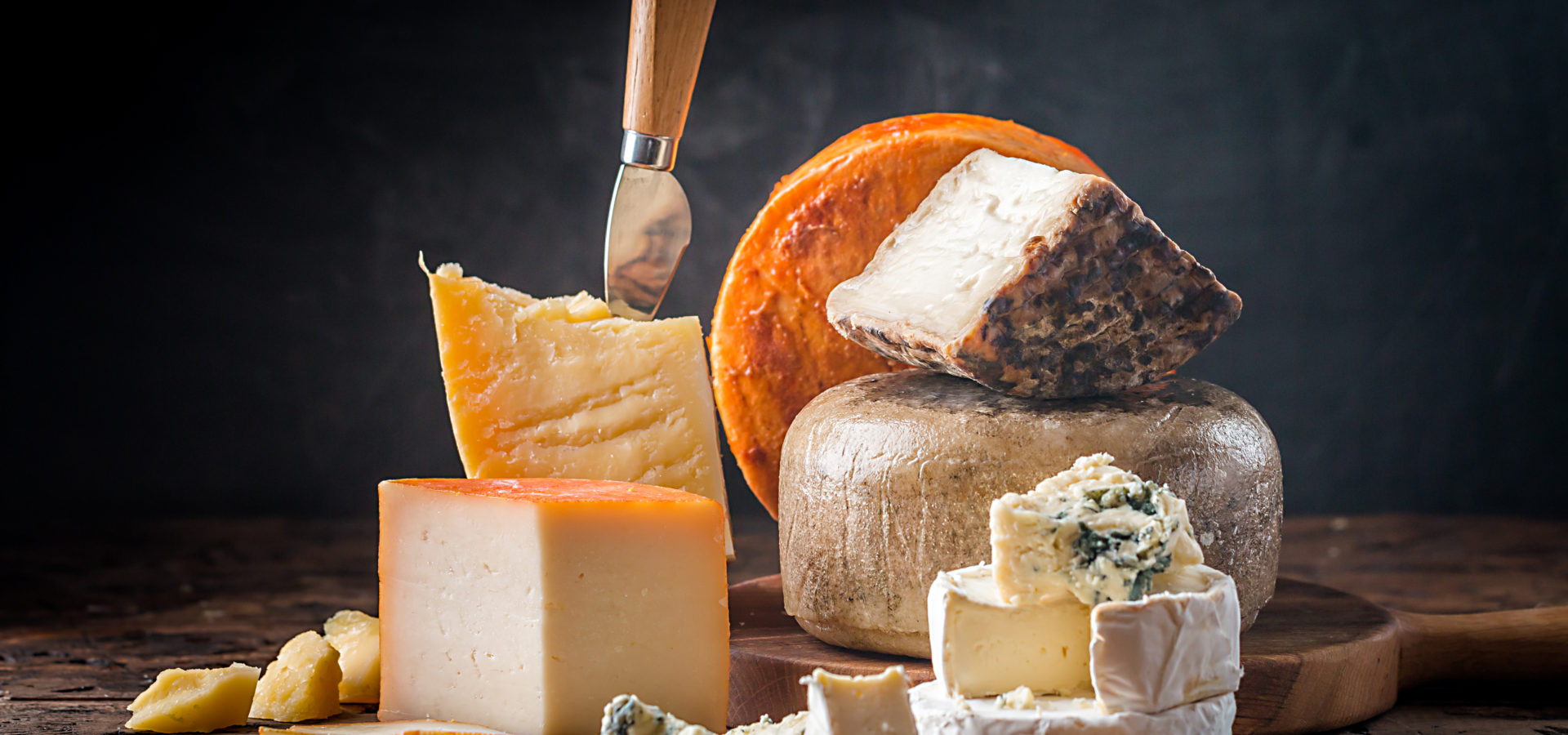Cheese is one of the most versatile foods for every dish, from breakfast to lunch, dinner, or dessert. As commonplace as cheese is though, there are still some aspects of it that feel mysterious. From the creation process to the classification, even the most sophisticated self-proclaimed cheese experts can have a lot of questions. One of those most common questions many people have is: What is the cheese rind (and can I eat it)?
Yes, It Is Safe to Eat Cheese Rind
A cheese rind is an outside layer formed during aging. So as long as it isn’t cloth, wax, or bark, rinds are safe to eat. They are natural and edible, and for many people, the rinds are an essential part of some cheeses’ complex flavors.
In an interview with Food and Wine, Tom Bivins, executive director of the Vermont Cheese Council, said that he often encourages cheese novices to taste the rind to better understand the cheese’s flavors. So yes, you can eat the rind. In fact, we recommend it!
The Three Types of Cheese Rind
Not all rinds are created equal. Wax, cloth, bark, and other inedible materials might be wrapped around cheese to preserve it, but you should avoid eating those. Additionally, spreadable, block, and fresh cheeses don’t have rinds at all.
While all three types of natural rinds are edible, personal preference is the deciding factor for whether you want to eat them or not. Each type has different flavors and textures, and those might vary between the kinds of cheeses.
1. Bloomy Rind
The bloomy rind is a white and soft rind that can sometimes be fuzzy. It usually has a woodsy flavor and is created after cheese-makers spray a solution that contains edible mold spores onto the cheese, which then blooms into the rind. Bloomy rinds are aged for about 60 days in humid, temperature-controlled rooms. Some of the most common kinds of cheese with bloomy rinds are Brie and Camembert.
Though the word ‘mold’ can raise eyebrows, bloomy rinds are completely safe to eat, as long as the cheese is still good. Don’t eat the cheese if:
- The rind has separated from the cheese.
- It has a gritty or thick texture.
- The cheese has an ammoniated taste or smell.
- The rind is mottled, sticky, red, or black.
- The cheese is firm (bloomy cheeses should never be firm).
As long as none of these signs are there, you can stop peeling that rind off before you eat your Brie.
2. Washed Rind
Washed rinds usually have an orange or reddish hue with a sticky or moist exterior. Cheesemakers will wash the cheese with brine, alcohol, or both, so edible molds will grow, which gives the rind a strong, salty flavor. Washed rinds are often the most aromatic, creating those ‘stinky cheeses’ that you always hear about. These cheeses can be soft enough to ooze or firm enough to grind.
One of the most common washed rind cheeses is Taleggio, which has a mild, yeasty taste. Another is Limburger. Though it has a strong smell, the flavor is rich and buttery. A few things to remember for washed rinds:
- Strong smells can lead to good flavors.
- Soft washed rinds shouldn’t be brown or cracking.
- Hard washed rinds may not be the most pleasant to eat.
- Eat this type of cheese within ten days of buying it.
3. Natural Rind
As the name suggests, natural rinds are formed when the outermost layer dries into a thin crust. Sometimes cheesemakers will rub the rind with oil, salt, lard, or a brine. Domestic Parmesan and Cheddar are some of the most popular natural rind cheeses.
The one exception to the ‘rinds are edible’ rule is a dry, natural rind that’s on cheeses like imported Parmigiano-Reggiano and Gouda. Oil or wax is brushed on the outside of the cheese to prevent unwanted molds forming, so these rinds should be cut away before eating.
Natural cheese rinds are usually thicker and harder than other rinds, and they can occasionally be gritty. For this reason, many people find natural rinds unpleasant to eat, though they are edible and great to use for flavoring soups and broths.
It’s Ultimately All About Personal Cheese Preference
Cheese rinds are safe to eat, but whether or not you do entirely depends on what you like. The different textures and flavors of a rind could increase your appreciation for the cheese, or it could be something you never want to eat again. Either way, it’s always worth a shot.
Cheesemongers work incredibly hard to perfect cheese in its entirety — including the rinds— so it feels counterintuitive to let such a significant part of cheese go to waste. Parmesan broth is one of the most well-known and simple ways to cook with cheese rind. If you make Bolognese, toss Parmesan rinds directly into the sauce to steep for a bit. You can also steep them in your milk and cream to add more flavor to your favorite macaroni and cheese recipe. If you’re feeling extra adventurous, try this quick microwave trick to make cheese crisps out of extra rinds.
If you’re a cheese lover looking to expand your palate, taste some rinds and talk over your reaction with your friends! If you aren’t planning on using them right away, just be sure to store the cheese rinds in a cool, dry place.
Looking to try some rind cheeses? Check out 7 White Wine and Cheese Pairings for Your Next Gathering for some delicious pairings.
Want updates sent straight to your inbox? Sign up for our email list to get tips, tricks, and cheesy coupons.





